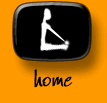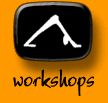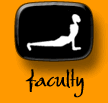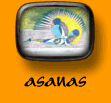

 |
 |
 |
 |
 |
 |
|
DOWNDOG | EAGLE | COBRA | HERO | HALF MOON | CORPSE | GATE
TRIANGLE | PEACOCK | LOCUST | COBBLER | SHOULDER STAND HEADSTAND | BRIDGE | CAMEL | COW FACE | UP BOW | INVERTED STAFF SEATED WIDE ANGLE | HEAD TO KNEE | TORTOISE | DANCER NOOSE  |
| Natarajasana ~ The Lord of Dance Pose Images by Nancy Van Kanegan Like any good dancer, make sure you warm up before attempting this pose. Sun salutations, shoulder openers, and backbends such as setu banda sarvangasana (bridge), ustrasana (camel) or eka pada rajakapotasana (pigeon) are good ways to get ready for Natarajasana, which in its most advanced version is like another intense backbend, ekapada viparita dandasana, done standing up. And unless you’re blessed with great flexibility, it helps to work into the full pose gradually. Here are some steps to follow in mastering this awesome dance. First, easy dancer. Start by standing tall in tadasana (mountain pose) with your legs firmed up. Shift the weight to your left foot, bend your right knee, and reach behind with your right hand to grab the top of your right foot. If you can’t reach your foot, put a strap around it and hold the strap. And if balance is a problem, be near a wall so you can support yourself with your left hand. Once you‘ve found your balance, rest your left hand on your hip (or against a wall) and take inventory of your alignment. Keep your heart lifting, your shoulders looping up and back, your tail down and in, and your shoulders and hips square to the front as you gaze at a fixed point in front of you. Stay here for a few breaths as you stretch your right knee straight down out of the pelvis to open the front of the thigh. If you want to go further, energize your left arm as you inhale, loop your left shoulder up and back, and stretch your arm up, keeping the top of the arm bone anchored in the shoulder socket. (Alternatively, you can stretch the left arm straight ahead, parallel to the floor.) With an exhale, scoop your lower abs in and up, and push your right foot back against your right hand as you stretch up and forward with your heart. As you push the foot back, work your right hip and shoulder forward to keep your hips and shoulders square and the knee under your right sitting bone, not flaring out to the side. Hold the pose for five to eight breaths, drawing energy in and stretching up as you inhale, and pushing your foot back more and expanding your heart forward more as you exhale. Max out the pose with one more inhale, then with an exhale release the right foot and go back into tadasana. Pause for a breath or two and notice how you feel, then do the other side. If you were steady and comfortable holding your foot with one hand in easy dancer, you might want to try holding it with two hands as you stand tall, extend the arms behind you, and push the foot back and up against both hands. This version helps to open the chest more and work the lifted leg more. As before, make sure you keep the hips and shoulders square, the knee of the raised leg in line with the sitting bone, and the standing leg straight and strong. In the full-out version of Natarajasana, you’ll want to have your arms stretching up and back, rather than back and down, to hold your foot, first with one, and eventually with both hands. This is extremely difficult for most people to do, even with one hand. To start working toward this version, loop the end of a long strap around your right foot and hold the strap with your right hand two or three feet up from the foot. As you bend your right knee and raise the right foot up, stretch your right arm out a bit to the right, then rotate the shoulder externally (up and back) as you bring the elbow forward, in towards your torso and then up past your ear while you push back with your right foot to extend the raised arm behind you. If you’re holding the strap too far up to get much stretch in the arm or leg, release and try the pose again, holding the strap closer to your foot. If you’re holding it too close to comfortably get into the pose, hold it farther away. Once you get the strap right, square off the hips and shoulders, and push your right foot back against the strap as you pull against it with your right hand. Extend the left arm up (or forward), keeping your tail in and performing the other actions described above for easy dancer. Your goal is to get your right thigh parallel to the floor with your right shin straight up and down (ankle directly over the knee). After holding for five to eight breaths, release and do the other side. Once you can comfortably hold the strap close to the foot, you can try doing this one-handed version without a strap. To do so, bend your right knee, lift your right foot up and turn it slightly out. Rotate your right shoulder, arm and hand externally so the palm faces up. Reach back and loop your middle and index fingers around the top of your right big toe (the fingers will go to the inside of the big toe, with the thumb to the outside of it). Bend the knee more so the foot comes in near your hips. Then, lifting the right leg higher, rotate your right shoulder externally and bring the elbow forward, in towards your torso and then up past your ear as you as you push back with your right foot to help extend the raised arm behind you. Your fingers will roll more around the top of the toe as you do this. Square off and perform the actions described for the previous version. If holding the big toe seems too difficult, try holding the top of the foot with your right hand. To do this, lift your right foot and rotate your arm and hand as above. But instead of looping the big toe, rotate the palm externally even more so you can bring the fingers from the outside of the foot around the top of the foot, with your thumb on the sole. Then, lifting the leg higher and pushing back with the foot, rotate the shoulder externally more and bring the elbow forward, in and up, as you slide your fingers more around the top of the foot so they curve around to reach the inner arch. Square off and complete the pose as described above. Once you’ve mastered this one-handed version of the full-out pose, work on holding the foot with two arms extended up and back. Again, it helps to start by using a strap, gradually working the hands down toward the feet until you can hold the top of the foot with both hands, keeping the lifted thigh parallel to ground and the shin perpendicular to it, with the knee and ankle in line with your right sitting bone. Then, if you want to go all the way, tilt your head back and bring the raised foot in to touch the top of your head. After this strong backbend, which, like all other backbends opens the nadis on the front of the body and really makes the energies dance around within you, it’s a good idea to do a forward bend as a counterpose and perhaps lie a while in savansana to let things settle and balance out. As you do, reflect on the miracle of the Cosmic Dance, in which you play a small yet infinitely important part. In her book Dancing the Body of Light, Dona Holleman (who also ends her discussion of asanas with Natarajasana) notes that the full two-handed version of this pose looks from the side like a wine glass ready to be filled with the Universal Force. And when the foot is placed on the back of the head, with an empty and transparent mind, the human embraces the Divine in the ecstasy of enlightenment. Sounds like a dance worth doing, doesn’t it?
* For more on the symbology of Natarajasana, see the article on it that John Friend wrote for the January/February 1998 issue of Yoga Journal, which is reprinted on his web site, www.Anusara.com.
Text by Tim
Noworyta |
||
|
E-mail: info@yogamind.com | Return Home :: mindfully designed by braddon.com :: |